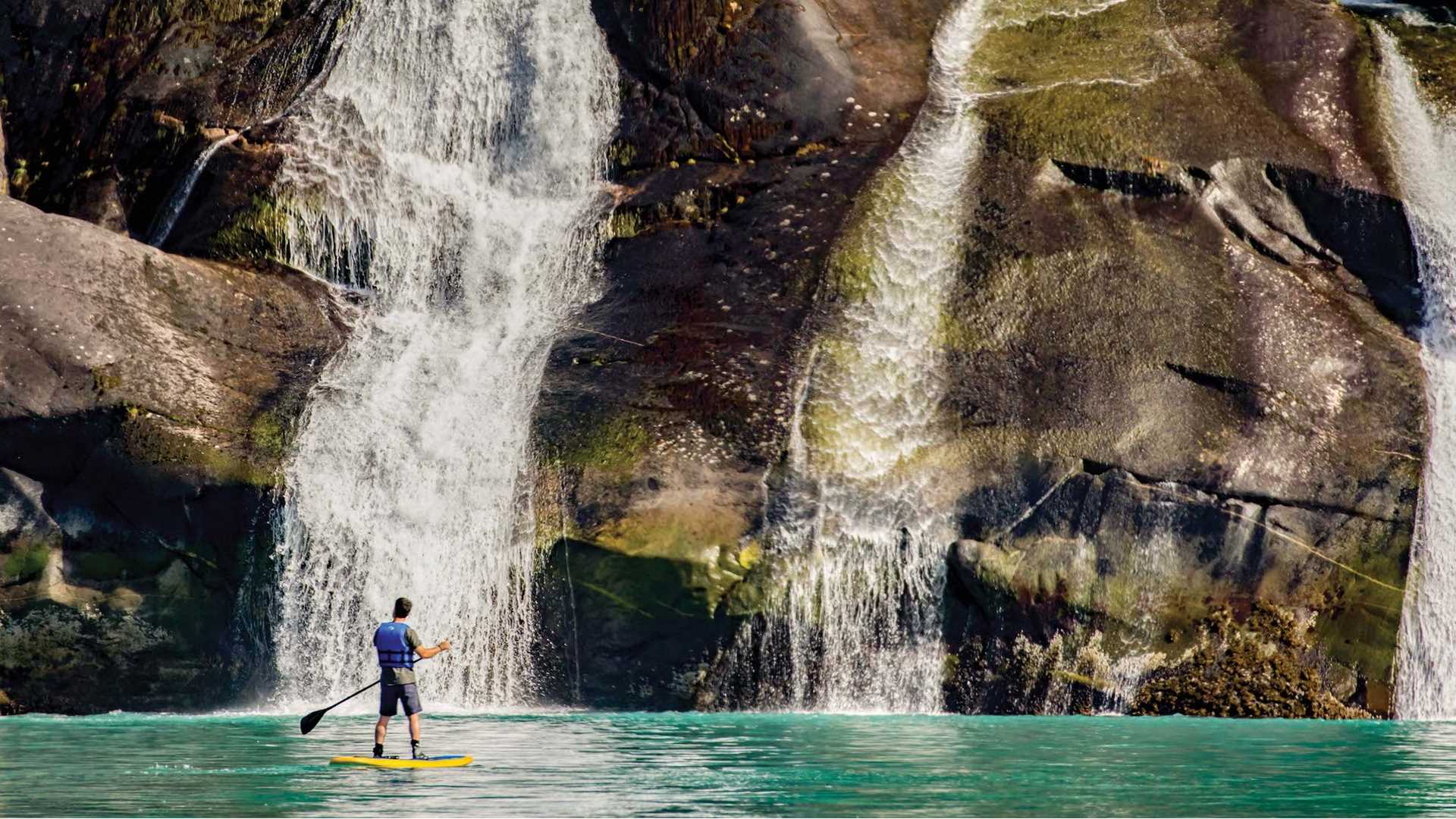As paddleboarding exploded in popularity, Glide expanded beyond whitewater products and into the rental and commercial use market—one of the largest segments in the industry but also the one creating the most waste and damage. “We had the perfect solution and we knew we had to educate people on the importance of using a product that wasn’t going to destroy the places we love to visit and explore.”
When you’re paddling on a Lindblad-National Geographic expedition, we’re proud to say that you’re standing on the most sustainable board in the industry. Driscoll shared some of the elements that set his boards apart.
No Flaking Means Healthier Fish

Standard paddleboards are coated with highly toxic auto paint. Every time you take a stroke and the paddle knocks the side of the board little chips of paint flake off and leach Volatile Organic Compounds (VOCs) into the ecosystem.
“Take a look all around the rails of a board after a few years of use and there’s literally no paint left—it’s all polluting our waterways and getting ingested by marine life,” explains Driscoll.
To prevent that from happening, Glide developed a unique, patent-pending formula called Glide Surface Shield (GSS), which is free of cancer-causing VOCs and eliminates the use of harmful epoxy paints.
This non-polluting product also improves paddle performance: the rough texture finish it creates helps break surface tension, so the board actually slides along the top of the water for a smoother ride.
Glide also strictly adheres to green manufacturing principles for its resins. They exclusively use 100% non-toxic Entropy Bio resins which are sourced from the waste stream of other industries like biodiesel fuel and paper production.
Reduce, Reuse, Recycle
No other American SUP company recycles their EPS foam scraps as efficiently as Glide. Though he founded Glide in Southern California, Driscoll ended up relocating to Salt Lake City, just a few short miles from ACH, the manufacturer of the foam used to make their boards.
“This not only greatly reduced our carbon footprint in shipping, but it allows ACH to easily pick up all our foam remnants and sanding waste which they grind into secondary foam used in construction projects,” explains Driscoll. The result is zero-waste—not a single ounce of leftover foam ends up biodegrading in a landfill.
They Can Take a Licking

That innovative GSS coating is not just eco-friendly, it’s also ultra-durable. Glide boards can withstand all kinds of abuse from rocks, debris, paddle strikes, drops, dragging, and more. When it comes to product testing, the team loves pushing the envelope to guarantee their boards stay intact—check out their very entertaining ‘Will It Break Wednesday?’ videos.
Most boards that are in heavy rotation in a commercial environment have a lifespan of just one season. That’s a whole lot of boards quickly ending up in landfills or maybe even dumped in the ocean. The better the longevity, the better for the planet.
“Thanks to Glide’s solid construction, Lindblad Expeditions-National Geographic will be getting seven plus years of use out of their entire fleet,” says Driscoll. “We’ve been in business for 10 years now and some of our original customers tell us they’re still enjoying the very first board they purchased.”

A Thrilling Way to Connect with Nature
You’ll find Glide paddleboards aboard seven of our ships, including National Geographic Venture, Quest, Orion, and Endeavour II. Paddling is a fun and dynamic way to personally explore the wild world—from idyllic shores and turquoise waters in the South Pacific to Alaska’s rugged, forest-lined coast.
It’s also perfect for a wide range of abilities and ages. Glide’s custom design is a bit wider than standard which makes it extremely stable for newbies, but veteran boarders will appreciate the thinned-out rails that make the board lively in the surf.
First time paddler? No problem! Driscoll shared the key to conquering this activity: don’t look down at the board! It may be hard at first but just like riding a bike, looking straight ahead or at the horizon will lead to less wobbling and more stability.
He also encourages everyone to try paddling at least once, even if you’re a bit nervous. “The visibility you get on a paddleboard is unparalleled,” says Driscoll. “You’ll feel more connected by standing on the water versus sitting inside a kayak, and you can see things more directly and clearly in the water.”









